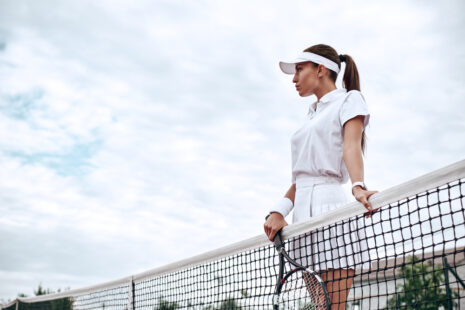One acute injury that a gymnast may suffer from is an ankle sprain. Ankle sprains occur when the ligaments that support the ankle joint are stretched or torn, often due to sudden twisting or rolling of the ankle during landings, jumps, or maneuvers on apparatus such as the floor exercise or balance beam. Ankle sprains are common in gymnastics due to the repetitive jumping, twisting, and landing movements involved in the sport.
Symptoms of an ankle sprain may include pain, swelling, bruising, and difficulty bearing weight on the affected ankle. The severity of the sprain can vary depending on the extent of ligament damage, ranging from mild (Grade I) to severe (Grade III) sprains.
Treatment for an ankle sprain typically involves the R.I.C.E. protocol…
- Rest – Avoid putting weight on the injured ankle and refrain from participating in gymnastics activities until the ankle has healed sufficiently.
- Ice – Apply ice to the injured ankle for 15-20 minutes every 2-3 hours during the first 48 hours to reduce pain and swelling.
- Compression – Wrap the ankle with an elastic bandage or compression wrap to help reduce swelling and provide support to the injured joint.
- Elevation – Elevate the injured ankle above the level of the heart whenever possible to promote drainage of excess fluid and reduce swelling.
In addition to the R.I.C.E. protocol, over-the-counter pain relievers such as acetaminophen or nonsteroidal anti-inflammatory drugs (NSAIDs) may be used to alleviate pain and discomfort. Physical therapy exercises to improve ankle strength, flexibility, and proprioception (awareness of joint position) may also be prescribed to facilitate recovery and prevent future injuries.
In more severe cases of ankle sprains, such as Grade II or Grade III sprains, immobilization with a brace, splint, or walking boot may be necessary to protect the injured ligaments and promote healing. Severe ankle sprains may also require medical evaluation and imaging studies (e.g., X-rays) to rule out fractures or other complications.
It’s essential for gymnasts to follow their healthcare provider’s recommendations for treatment and rehabilitation and to gradually reintroduce gymnastics activities once the ankle has healed sufficiently to minimize the risk of reinjury. Proper warm-up, stretching, technique refinement, and adherence to safety guidelines can also help prevent ankle sprains and other acute injuries in gymnastics.




